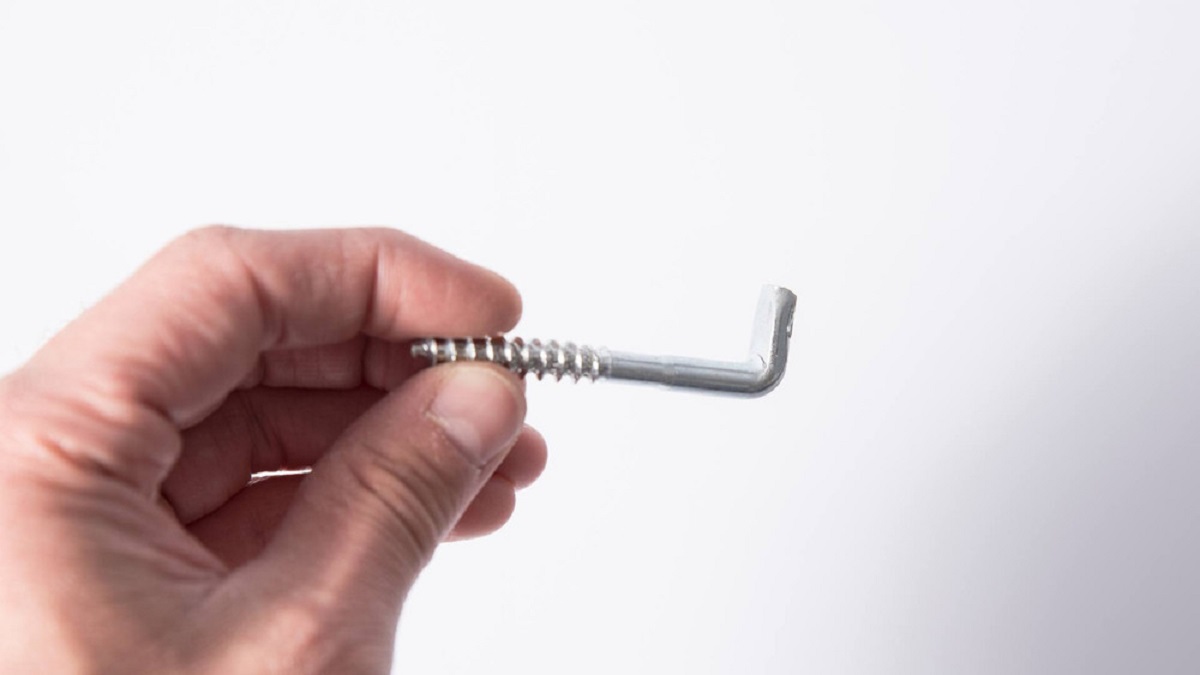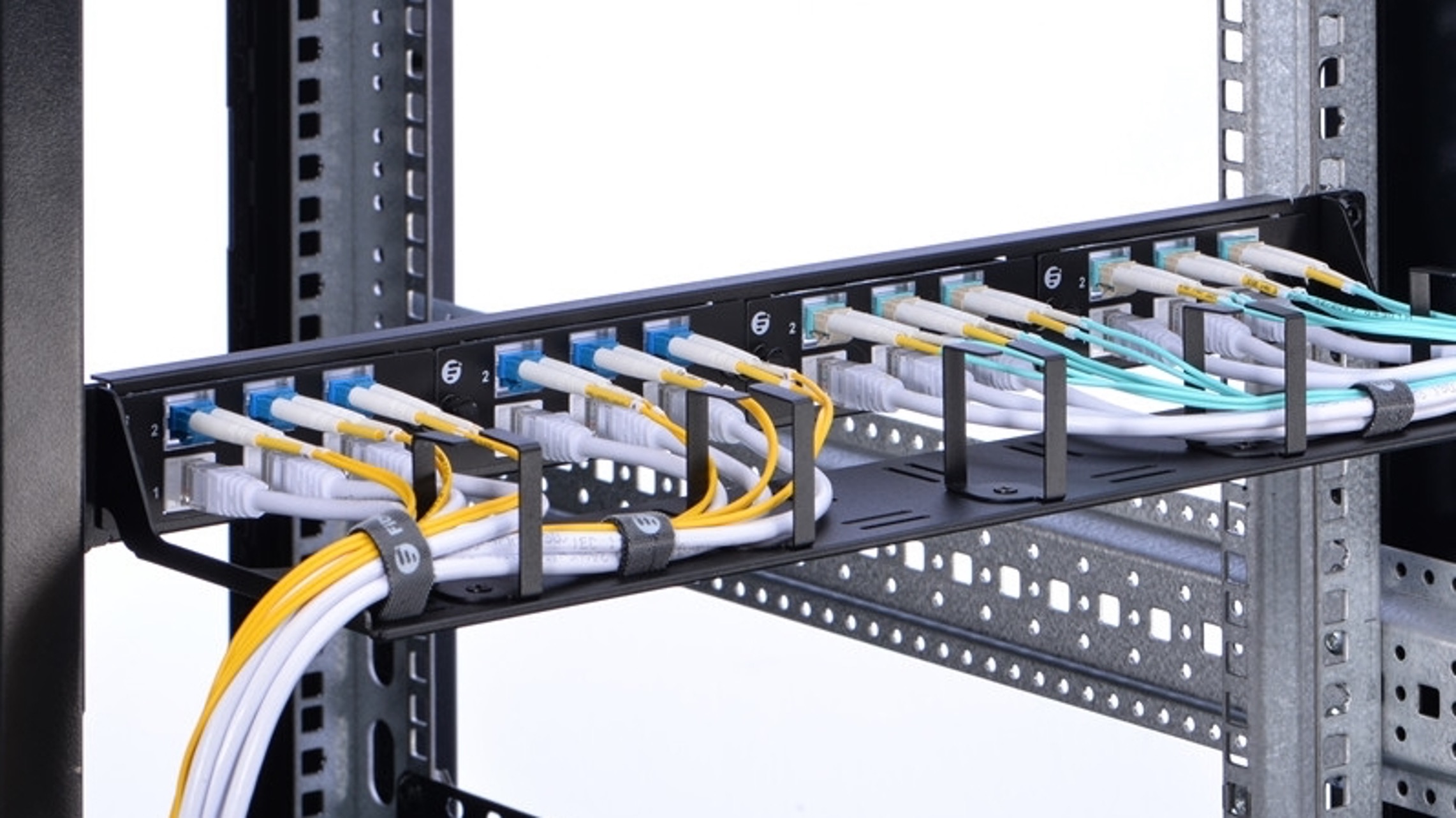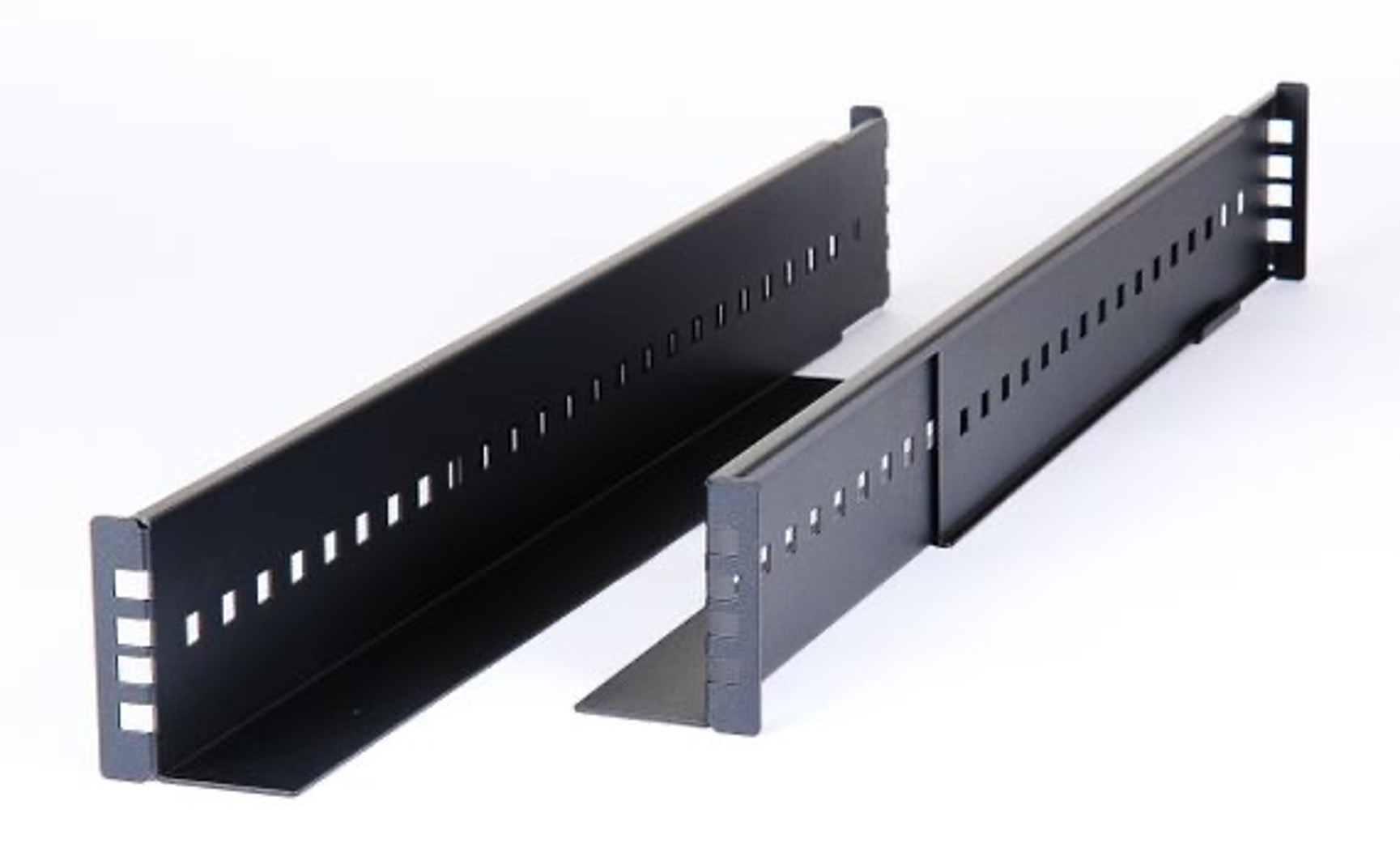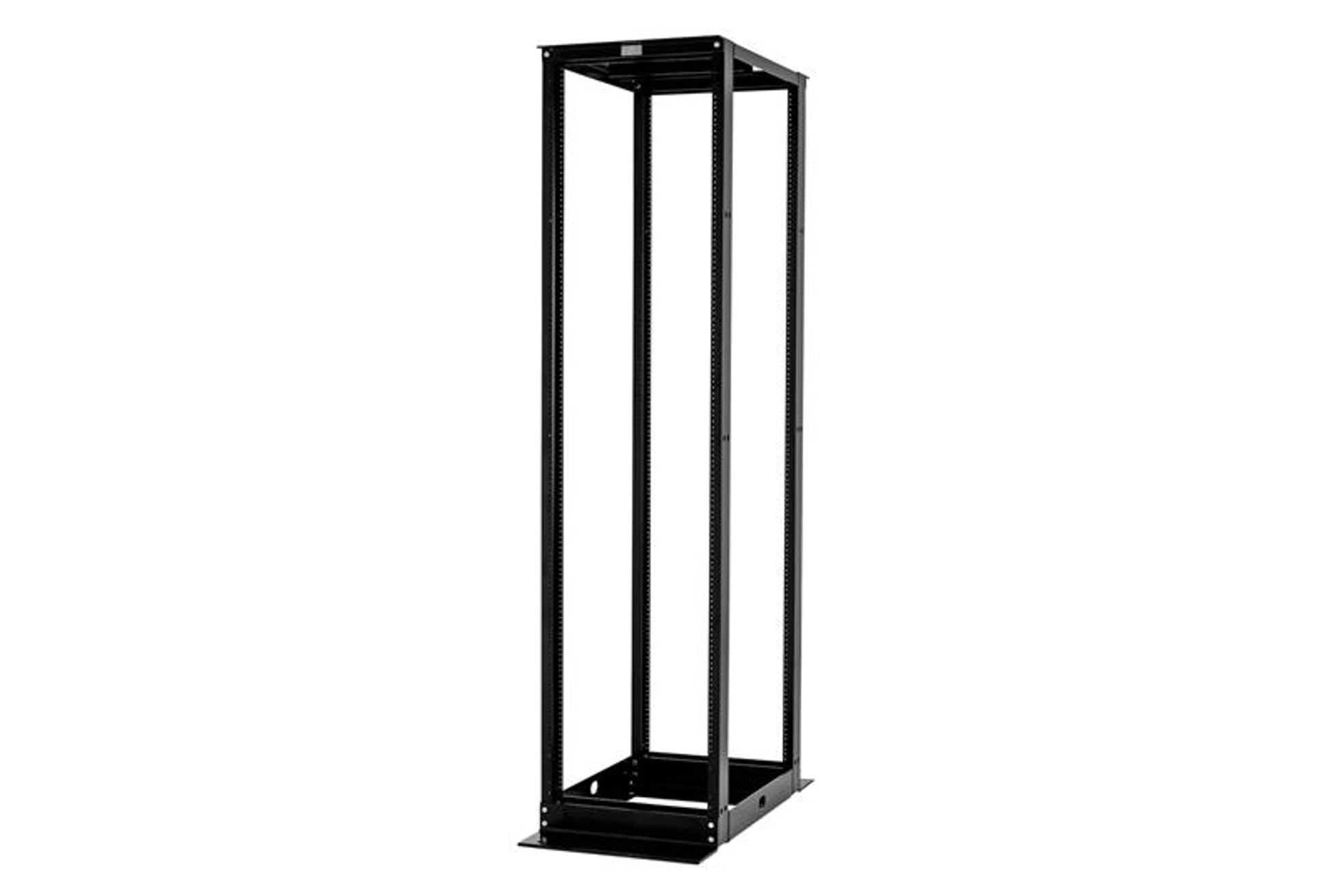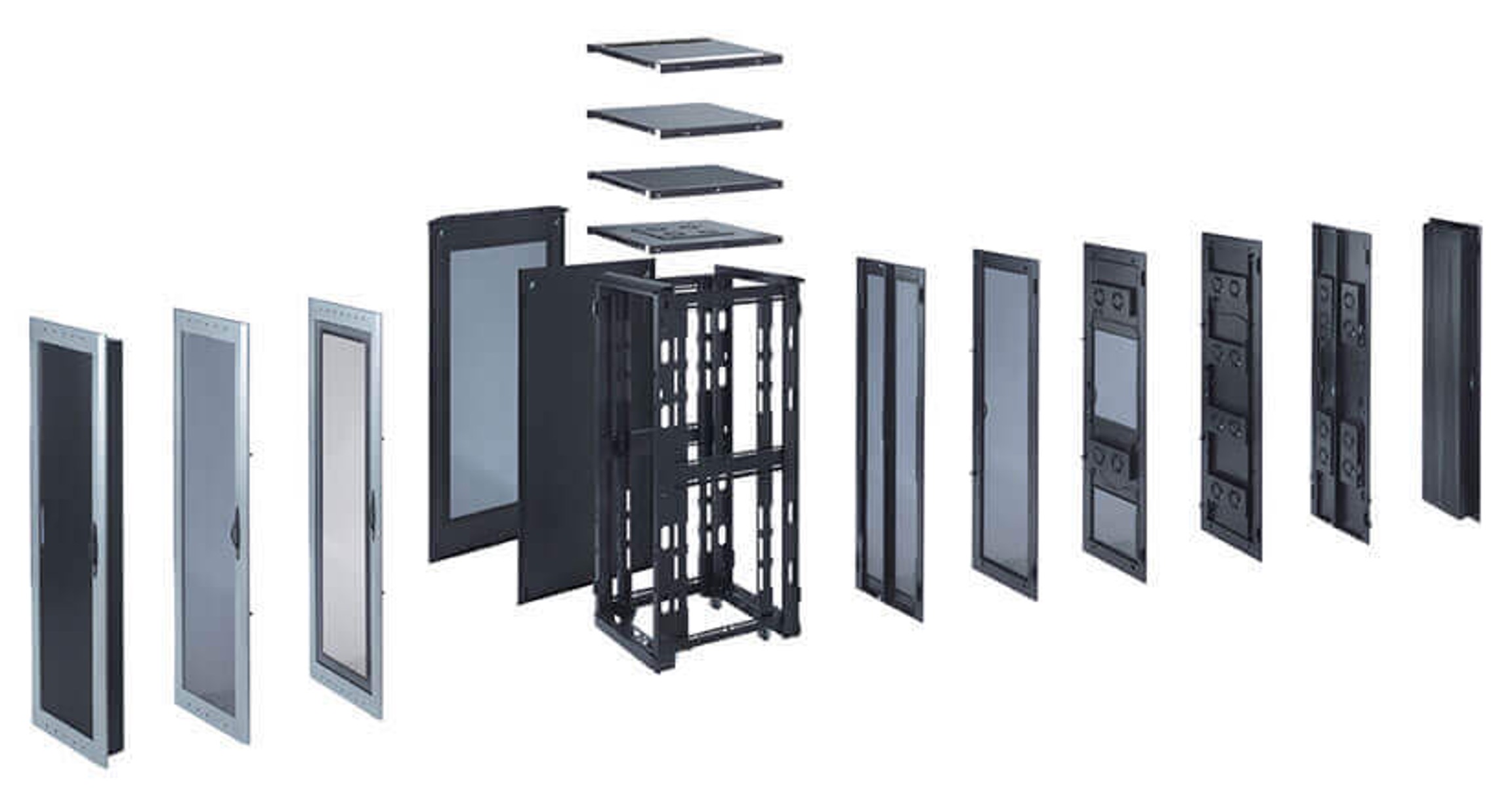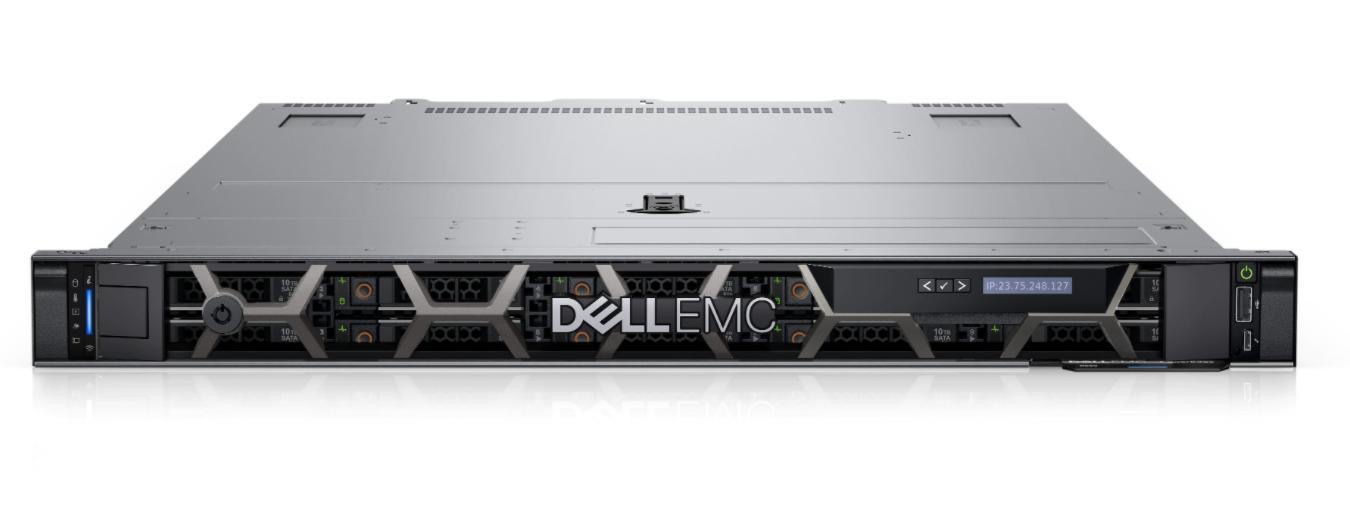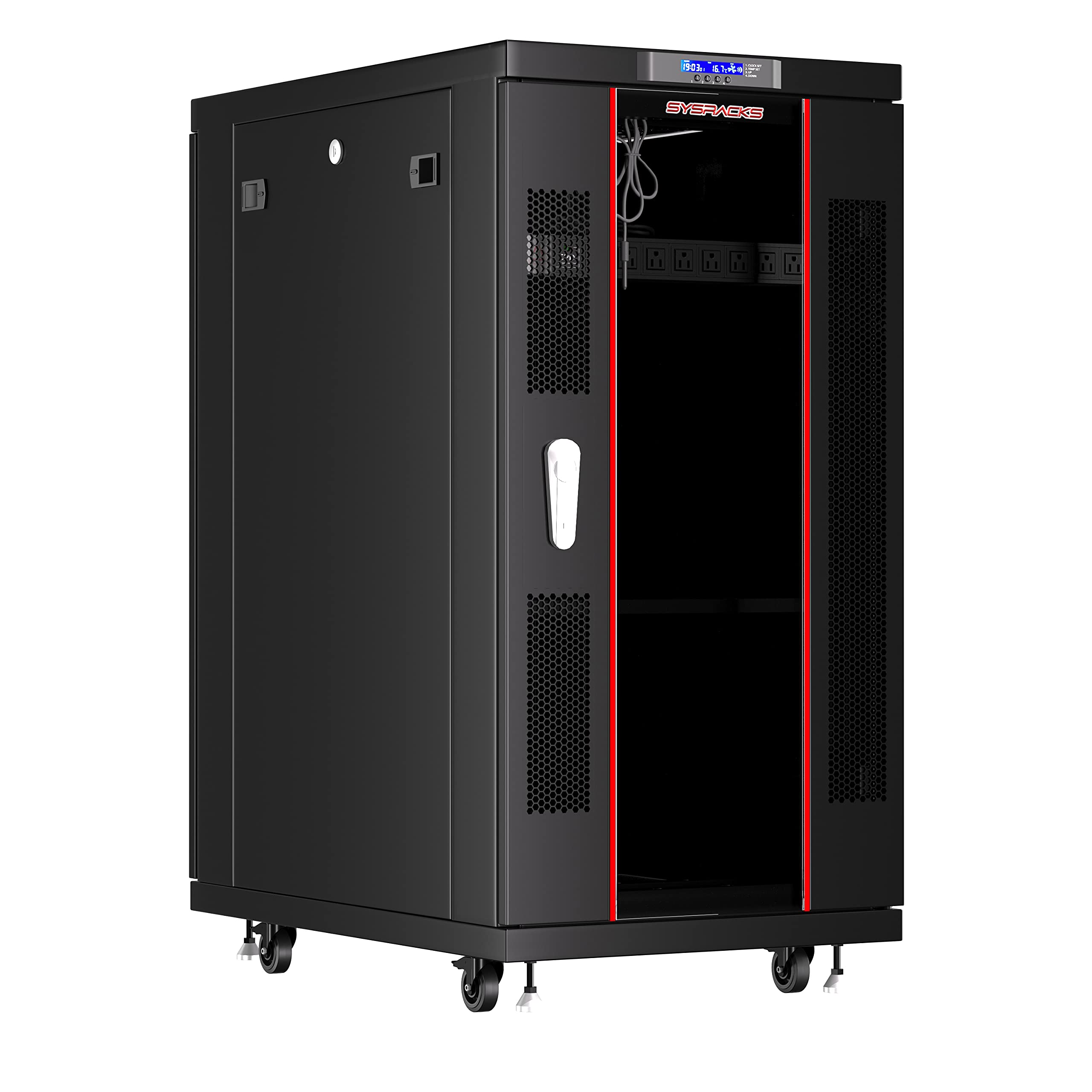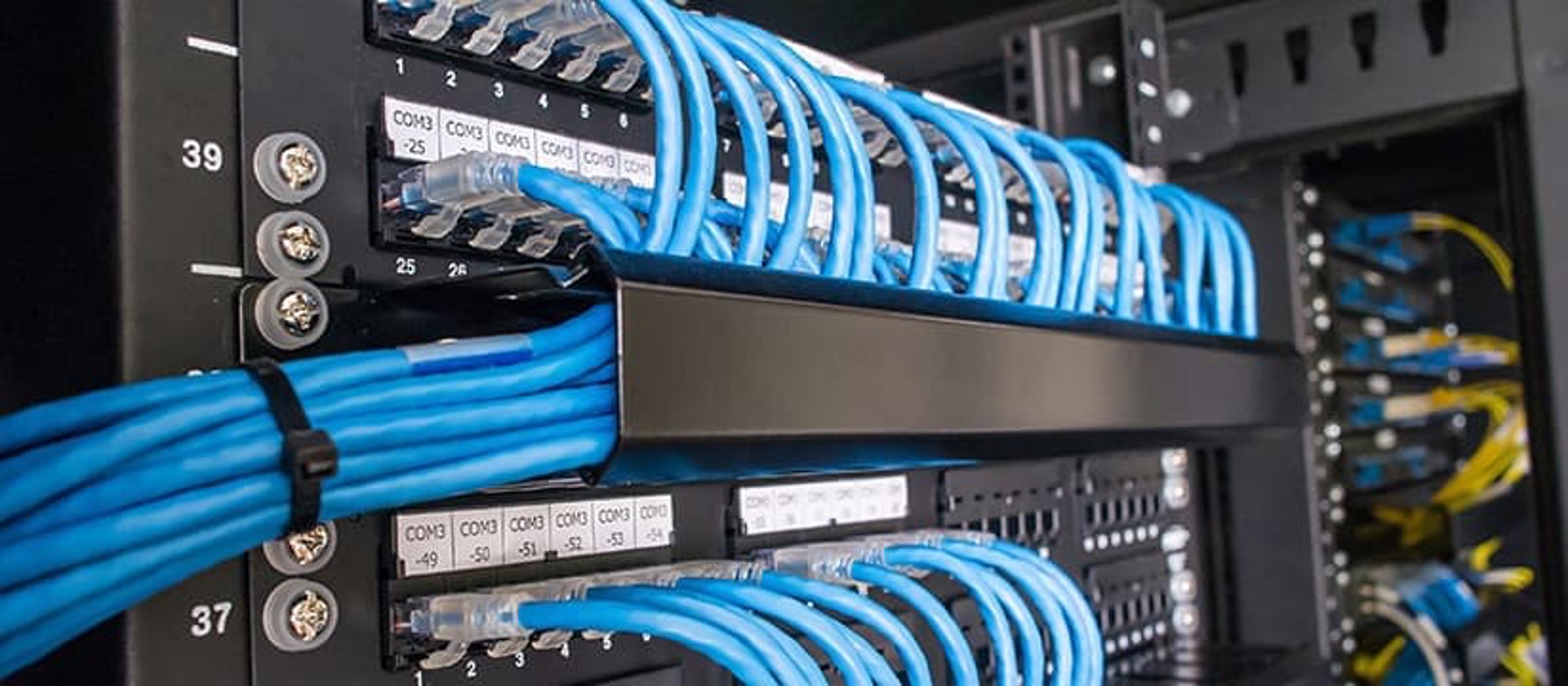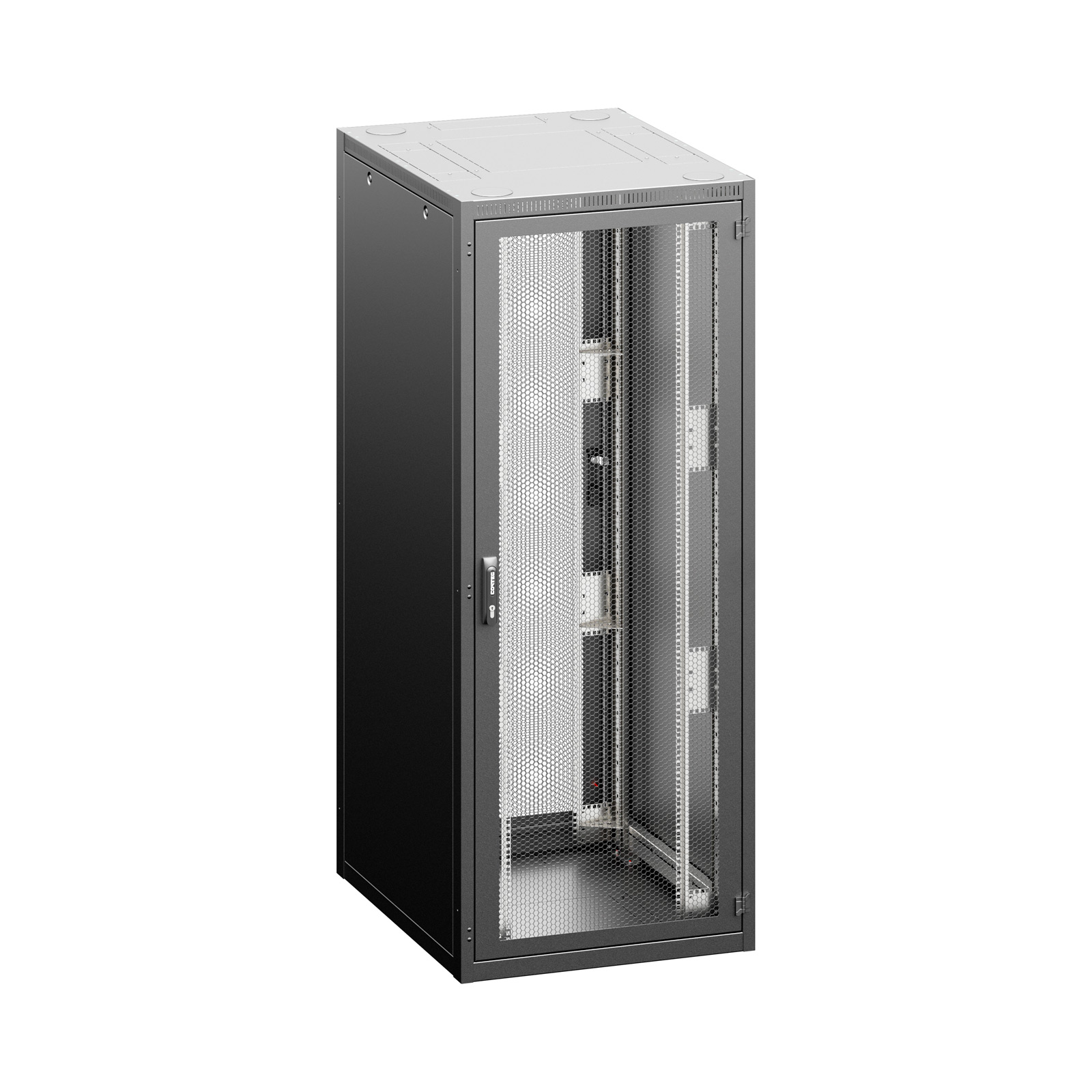Introduction
Welcome to our comprehensive guide on choosing the right size screws for your server rack. Whether you are setting up a new server cabinet or replacing existing screws, it is essential to understand the different screw sizes and factors that influence their selection.
A server rack plays a crucial role in organizing and protecting your valuable network equipment. From servers and switches to patch panels and cable management, a properly mounted infrastructure ensures efficient operations and minimizes the risk of damage or accidents.
While it may seem like a minor detail, selecting the correct screw size is vital for securely mounting your equipment in the server rack. Using the wrong size can lead to instability, inadequate support, or even damage to your expensive hardware.
In this guide, we will discuss the common sizes of server rack screws and delve into the factors you should consider when choosing the appropriate screw size for your specific requirements. We will also provide step-by-step instructions on how to measure and determine the correct screw size.
Furthermore, we will explore additional considerations when selecting screw size based on equipment or rack types. By the end of this guide, you will have a comprehensive understanding of how to choose the right screws for your server rack, ensuring a reliable and secure installation.
Understanding Server Rack Screws
Server rack screws are specially designed screws used to secure equipment to the mounting rails inside a server rack. These screws play a critical role in providing stability and support to the hardware, ensuring safe and efficient operations.
One of the most common types of server rack screws is the M6 screw. M6 refers to the metric measurement of the screw’s diameter. These screws are widely used in server racks manufactured in Europe, Asia, and other regions that adopt metric measurements.
Another prevalent type of server rack screw is the 10-32 screw. The ’10’ refers to the screw’s diameter in the imperial measurement system, while ’32’ denotes the number of threads per inch.
It’s important to note that different server racks may require specific screw types, depending on the manufacturer’s specifications or the rack’s design. Some racks may be equipped with square holes, known as square-hole racks, requiring specialized cage nuts and screws for installation.
Server rack screws are typically made of durable materials, such as steel or zinc-plated steel. These materials provide robustness and resistance to rust, ensuring the longevity of the installed equipment.
Understanding the various types and sizes of server rack screws is crucial for successfully mounting your equipment. In the next section, we will explore the common sizes of server rack screws available in the market.
Common Sizes of Server Rack Screws
When it comes to server rack screws, there are several common sizes that you will come across. These sizes are standardized and widely available, making it easier to find the right screws for your server rack installation.
The most commonly used server rack screw size is the M6 screw. This screw has a metric diameter of 6mm and is often used in server racks manufactured in Europe, Asia, and other regions that adopt metric measurements. M6 screws provide a secure and stable mounting solution for a wide range of equipment.
For server racks manufactured in countries using the imperial measurement system, the 10-32 screw is commonly used. The ’10’ in 10-32 represents the screw’s diameter in inches, while ’32’ denotes the number of threads per inch. These screws are widely available and compatible with most standard server racks.
In addition to M6 and 10-32 screws, you may also come across other sizes such as M5, M4, or 12-24 screws. These sizes are less common but may be used in specific server rack configurations or for mounting smaller equipment.
It’s essential to check the manufacturer’s specifications or the rack’s documentation to determine the appropriate screw size for your specific server rack. Using the wrong size could result in improper mounting, instability, or damage to your equipment.
When purchasing server rack screws, it is recommended to opt for high-quality screws made of durable materials such as steel or zinc-plated steel. These materials provide strength, longevity, and resistance to rust, ensuring reliable and secure installations.
Now that we have explored the common sizes of server rack screws, let’s move on to the factors you should consider when choosing the right screw size for your server rack installation.
Factors to Consider When Choosing Screw Size
Choosing the appropriate screw size for your server rack installation requires careful consideration of several factors. By taking these factors into account, you can ensure a secure and reliable mounting solution for your equipment.
Rack Type: Different server racks may have specific requirements for screw size. For example, square-hole racks often require cage nuts and screws that are compatible with square holes. Check the rack’s documentation or consult the manufacturer to determine the appropriate screw size for your specific rack type.
Equipment Weight: Consider the weight of the equipment you will be mounting in the server rack. Heavier equipment may require larger and more robust screws to provide adequate support and prevent instability.
Rack Depth: The depth of the server rack is another important factor to consider. If the rack has a substantial depth, longer screws may be necessary to ensure proper attachment of the equipment to the mounting rails.
Thread Type: The thread type of the screws should match the mounting holes in both the equipment and the server rack. Metric threads are commonly used with M6 screws, while imperial threads are used with 10-32 screws. Using the wrong thread type can lead to improper fitting and may compromise the stability of the installed equipment.
Security Requirements: In some cases, the security of the rack-mounted equipment may be a consideration. In such instances, screws with unique heads or tamper-proof features may be required to prevent unauthorized access or tampering.
Compatibility: Ensure that the chosen screw size is compatible with the equipment you will be mounting in the server rack. This includes considering the equipment’s mounting hole size and compatibility with the chosen screw size.
By considering these factors, you can make an informed decision when selecting the appropriate screw size for your server rack installation. Next, we will cover how to measure and determine the correct screw size.
How to Measure and Determine Screw Size
Measuring and determining the correct screw size for your server rack requires a few simple steps to ensure a proper fit. By following these steps, you can confidently choose the appropriate screw size for your installation:
- Check the Rack Specification: Refer to the rack’s documentation or contact the manufacturer to find the recommended screw size for your specific server rack. This information will provide a starting point for your selection process.
- Assess the Mounting Holes: Examine the mounting holes on both the equipment and the server rack. For metric racks, such as those using M6 screws, the holes are typically 6mm in diameter. For racks using imperial screws, such as 10-32, the holes will have a diameter of approximately 0.19 inches.
- Use a Caliper or Ruler: If the rack’s documentation does not provide detailed information or if you are uncertain about the hole diameter, you can use a caliper or ruler to measure it accurately. Place the caliper or ruler across the hole and measure the diameter in millimeters or inches, depending on the measurement system.
- Compare the Measurement: Once you have the diameter of the mounting holes, compare it with the recommended screw size for your server rack. Select a screw size that is either identical to the measurement or slightly smaller to ensure a secure fit.
- Consider the Screw Type: Pay attention to the thread type of the screws, whether they are metric or imperial, and choose the appropriate screw type that matches the mounting holes in the equipment and the server rack.
By following these steps and taking accurate measurements, you can confidently determine the correct screw size for your server rack installation. It is always recommended to double-check with the rack’s documentation or consult the manufacturer for specific recommendations.
Now that you know how to measure and determine the screw size, let’s move on to discuss how to choose the screw size based on equipment or rack type.
Choosing Screw Size Based on Equipment or Rack Type
When it comes to choosing the appropriate screw size for your server rack, considering the equipment or rack type is essential. Different equipment and rack configurations may have specific requirements that dictate the screw size needed for a secure installation.
Rack-Mount Servers and Networking Equipment: Servers and networking equipment, such as switches or routers, are typically designed to be compatible with specific screw sizes. It is important to refer to the equipment’s documentation or manufacturer specifications to determine the recommended screw size for proper mounting.
Blade Servers: Blade servers have a different form factor and may require specialized screws or mounting solutions. Manufacturers usually provide specific instructions or accessories to ensure appropriate installation and compatibility with the blade server chassis.
Rack Equipment with Square Holes: Some server racks are designed with square mounting holes instead of round holes. In this case, cage nuts and screws are commonly used for installation. Ensure you have the correct cage nut size and choose screws that are compatible with square holes.
Rack Equipment with Slotted or Universal Mounting Holes: Certain server racks may have slotted or universal mounting holes to provide flexibility in equipment placement. In such cases, screws with a larger diameter or adjustable depth may be required to securely fasten the equipment in the desired position.
Rack Accessories and Cable Management: When mounting accessories such as cable management panels or shelves, you may need to consider the specific screw size mentioned in the accessory’s documentation. These accessories often come with their own recommended screw sizes to ensure proper attachment.
Rack Rails and Slide Rails: If your server rack includes rack rails or slide rails for easy equipment installation and removal, refer to the rail’s documentation for the recommended screw size. Different rail systems may have specific requirements to ensure stability and functionality.
By considering the equipment or rack type, you can select the appropriate screw size for a secure and proper installation. Always consult the equipment’s documentation or contact the manufacturer for specific guidelines and recommendations.
Next, we will discuss additional considerations you should keep in mind when selecting the screw size for your server rack installation.
Additional Considerations for Screw Size Selection
While understanding the equipment and rack type is crucial for selecting the right screw size, there are additional factors that you should consider to ensure a successful installation and optimal performance.
Weight Capacity: Take into account the weight capacity of your server rack and the maximum load that it can support. Heavier equipment may require larger screws or additional support to ensure stability and prevent any potential damage or accidents.
Vibration and Shock Resistance: If your server rack is located in an environment prone to vibrations or shocks, such as a data center or industrial setting, consider using screws designed to withstand these conditions. Vibration-resistant screws feature locking or thread-locking mechanisms to prevent loosening due to continuous vibrations.
Cable Management: Proper cable management is crucial for maintaining an organized and efficient server rack. When selecting the screw size, consider the space required for routing cables and the installation of cable management accessories. Ensure that the chosen screws do not obstruct cable pathways or interfere with cable management solutions.
Future Expansion: If you anticipate future expansion or the addition of new equipment to your server rack, it is advisable to choose screws that allow for flexibility and adjustability. Opt for screws with adjustable depth or longer screws to accommodate potential equipment upgrades or changes in your infrastructure.
Security Requirements: Depending on the nature of your organization or the sensitivity of the equipment in the server rack, you may need to consider security measures. If security is a priority, explore screws with unique heads, tamper-proof features, or options that require specialized tools for removal.
Manufacturer Recommendations: Manufacturers often provide specific recommendations for screw sizes to ensure compatibility and optimal performance. Take advantage of these recommendations by referring to the equipment’s user manual or contacting the manufacturer directly for guidance.
Considering these additional factors alongside the equipment and rack type will help you make a more informed decision when selecting the screw size for your server rack installation. By taking these considerations into account, you can ensure a secure and efficient setup that meets your immediate needs and allows for future scalability.
Now that we have discussed the additional considerations, let’s summarize the key points covered in this guide.
Conclusion
Choosing the right size screws for your server rack is crucial for ensuring a secure and stable mounting solution for your equipment. By understanding the different factors involved, you can make an informed decision that meets the specific requirements of your server rack installation.
We began by discussing the importance of server rack screws and their role in organizing and protecting your network equipment. We explored the common sizes of server rack screws, including M6 and 10-32, and highlighted the significance of considering equipment weight, rack depth, and thread type when choosing the appropriate screw size.
We then provided a step-by-step guide on how to measure and determine the correct screw size, emphasizing the importance of referring to the rack’s documentation and measuring the mounting holes accurately. Additionally, we discussed how to choose the screw size based on equipment or rack type, taking into account considerations such as blade servers, square-hole racks, and slotted mounting holes.
We also highlighted additional factors to consider during the screw size selection process, such as weight capacity, vibration resistance, cable management, future expansion, and security requirements. These considerations play a vital role in ensuring a successful and efficient server rack installation.
Remember, it is always recommended to consult the manufacturer’s specifications and guidelines for your specific equipment and rack type. By following their recommendations, you can ensure compatibility and optimize the performance of your server rack installation.
With the knowledge gained from this guide, you are now equipped to confidently choose the right size screws for your server rack, whether you are setting up a new rack or replacing existing screws. A well-mounted infrastructure will not only provide a secure environment for your equipment but also contribute to the overall efficiency and reliability of your network operations.







